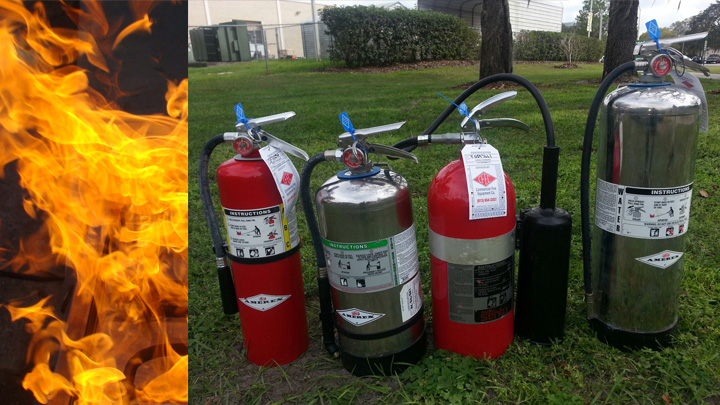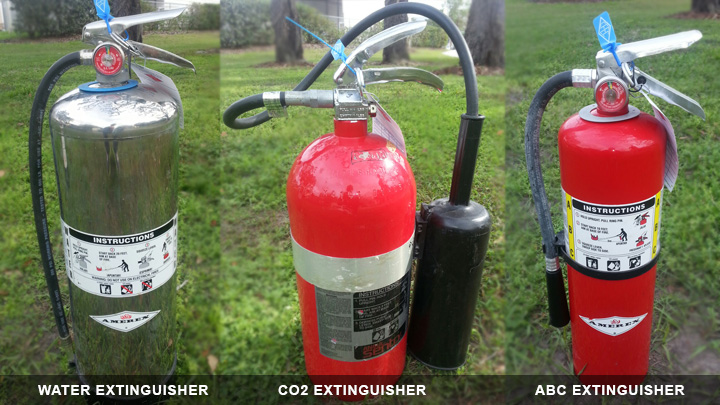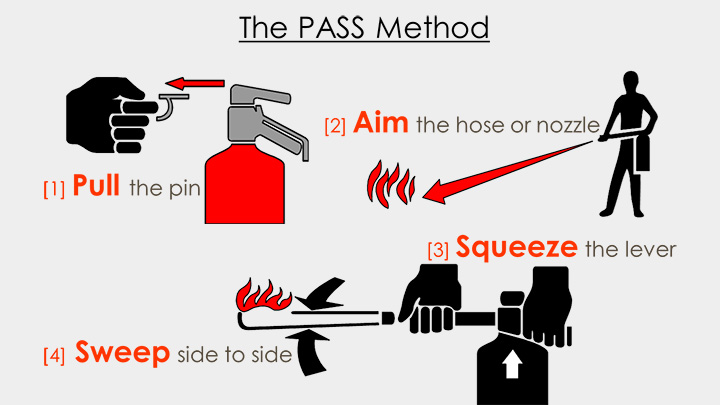Fire Safety
Fire Extinguishers

Fire equals a state, process, or instance of combustion in which fuel or other material is ignited and combined with oxygen, giving off light, heat, and flame. Fire requires fuel, heat and oxygen to burn. Fire extinguishers apply an agent that will cool burning heat, smother fuel or remove oxygen so the fire cannot continue to burn. A portable fire extinguisher can quickly control a small fire if applied by an individual properly trained.
Fire extinguishers are located throughout every building on campus. To properly use an extinguisher, you must first be familiar with the type of fire each extinguisher is rated for and how it operates.
Fire Classifications
Class A - Fires involving the ordinary combustible materials such as wood, cloth, paper, plastics etc.
Class B - Fires involving combustible or flammable liquids such as gasoline, kerosene and oils.
Class C - Fires involving energized electrical equipment such as appliances of all kinds, motors, computers etc.
Class D - Fires involving combustible metals such as sodium, lithium, titanium, magnesium.
Which Extinguisher Do I use?

- Pressurized Water: Use on Class A Fires
- Carbon Dioxide (CO2): Use on Class B and C Fires
- Multi-Purpose Dry Chemical (ABC): Use on Class A, B, and C Fires
How to Use a Portable Fire Extinguisher
The easiest way to remember how to use a portable fire extinguisher is to use the acronym: PASS

REMEMBER:
All fires regardless of size and damage must be reported to University Police by dialing 911. Even though it appears to be extinguished, a Fire Marshal still needs to respond to verify it's out as well as accomplish a report.
TIPS:
- Always know the location of the nearest extinguisher, that it's in operable condition and how to use it
- Before using the fire extinguisher, evacuate the building by pulling the manual fire alarm pull station to alert other occupants of the facility. (Located near exits and stairs)
- If a fire alarm pull station is not available, yell or scream out loud "fire, fire, fire"
- Call 9-1-1 for University Police or have someone else call
- Only attempt to extinguish small fires- if one extinguisher does not do it, evacuate the area immediately
- While fighting the fire, do not allow your escape route to become blocked by fire
- Position yourself between the exit and the fire
- After an extinguisher is used, contact EH&S to have it serviced or replaced